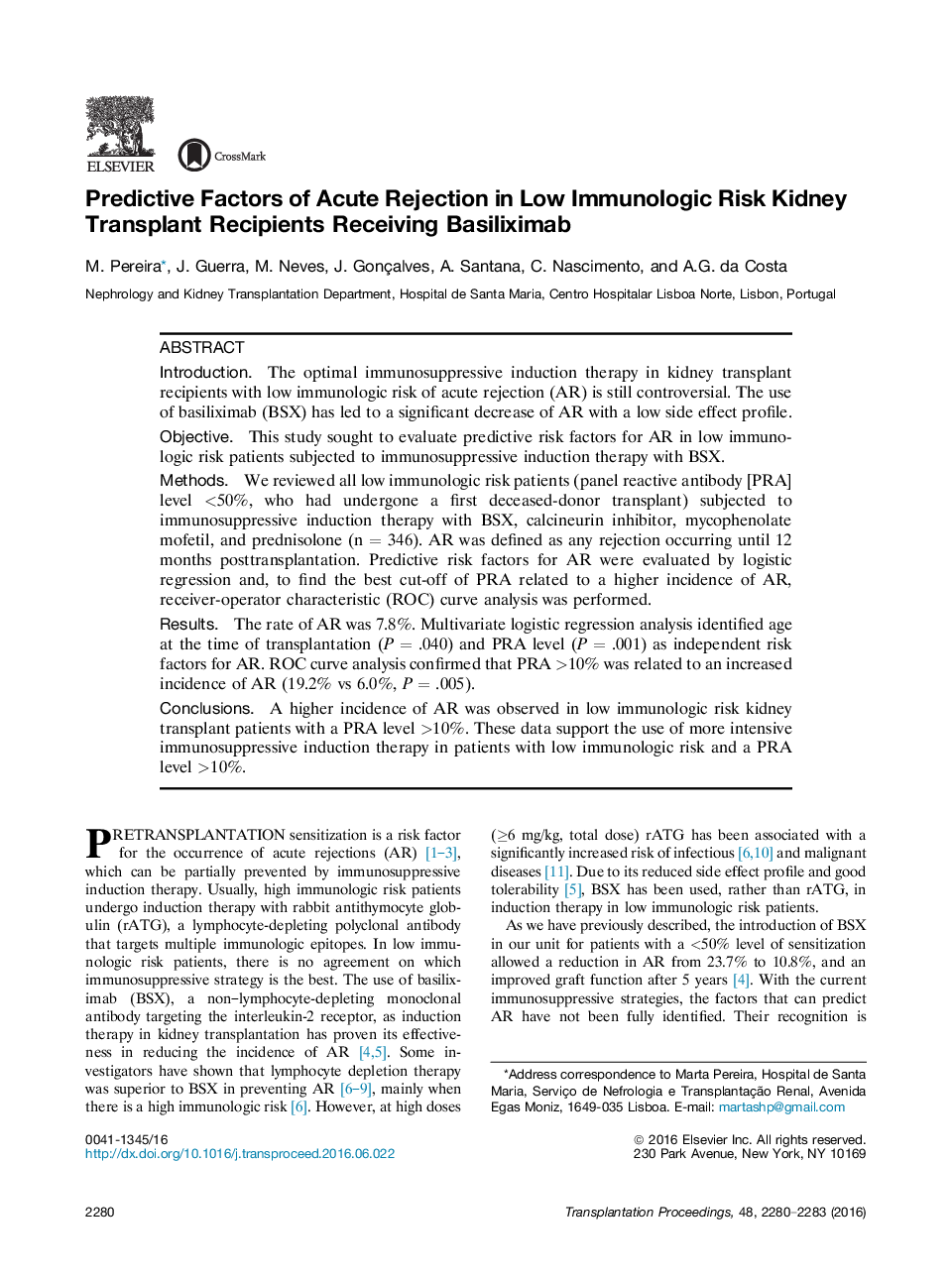| Article ID | Journal | Published Year | Pages | File Type |
|---|---|---|---|---|
| 5729348 | Transplantation Proceedings | 2016 | 4 Pages |
IntroductionThe optimal immunosuppressive induction therapy in kidney transplant recipients with low immunologic risk of acute rejection (AR) is still controversial. The use of basiliximab (BSX) has led to a significant decrease of AR with a low side effect profile.ObjectiveThis study sought to evaluate predictive risk factors for AR in low immunologic risk patients subjected to immunosuppressive induction therapy with BSX.MethodsWe reviewed all low immunologic risk patients (panel reactive antibody [PRA] level <50%, who had undergone a first deceased-donor transplant) subjected to immunosuppressive induction therapy with BSX, calcineurin inhibitor, mycophenolate mofetil, and prednisolone (n = 346). AR was defined as any rejection occurring until 12 months posttransplantation. Predictive risk factors for AR were evaluated by logistic regression and, to find the best cut-off of PRA related to a higher incidence of AR, receiver-operator characteristic (ROC) curve analysis was performed.ResultsThe rate of AR was 7.8%. Multivariate logistic regression analysis identified age at the time of transplantation (P = .040) and PRA level (P = .001) as independent risk factors for AR. ROC curve analysis confirmed that PRA >10% was related to an increased incidence of AR (19.2% vs 6.0%, P = .005).ConclusionsA higher incidence of AR was observed in low immunologic risk kidney transplant patients with a PRA level >10%. These data support the use of more intensive immunosuppressive induction therapy in patients with low immunologic risk and a PRA level >10%.
